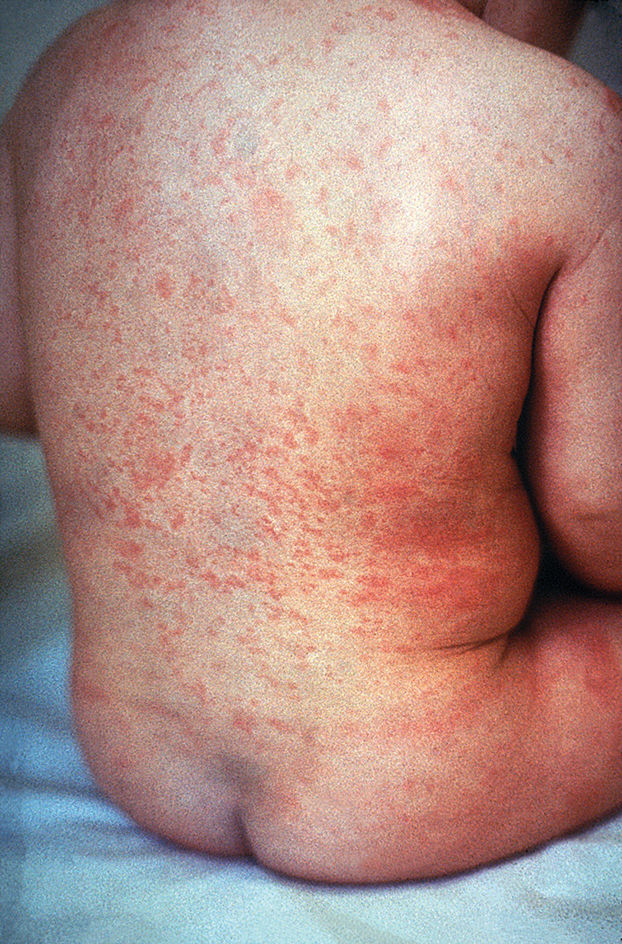Rubella is a common contagious disease that most frequently affects children. It is also called German measles. Most cases of rubella are not serious. However, if a woman develops the disease during early pregnancy, it may result in her baby having one or more birth defects. Such birth defects may include intellectual disabilities, impaired vision and hearing, and malformations of the heart.

Rubella is caused by a virus, which is spread chiefly in droplets expelled when an infected person coughs or sneezes. Two to three weeks after contact with the disease, a person may develop a runny nose or mild fever. Pink, slightly raised spots appear on the face and spread to the trunk and limbs. Lymph nodes on the back of the scalp, behind the ears, and on the side of the neck may become tender. These symptoms usually disappear in a few days. In adolescents and adults, the symptoms often are more severe than in children and may include painful, swollen joints. In some cases of rubella, no symptoms appear. Infected people can spread the virus to others from about seven days before the rash develops until about five days after its appearance.
There is no specific treatment for rubella. A case of rubella results in immunity (resistance) to the disease for the rest of a person’s life. In 1969, a vaccine became available that also provides immunity to rubella. Doctors recommend that children 15 months of age or older be given this vaccine and that a second dose be given from 4 to 12 years of age. It is generally combined with vaccines for measles and mumps. Widespread vaccination has eliminated the disease from the United States, but rubella still occurs in other regions of the world.
